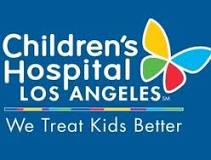Endocrine Dysfunction and Growth Hormone Deficiency in Children With Optic Nerve Hypoplasia
| Status: | Completed |
|---|---|
| Conditions: | Neurology, Endocrine |
| Therapuetic Areas: | Endocrinology, Neurology |
| Healthy: | No |
| Age Range: | Any - 5 |
| Updated: | 5/5/2014 |
| Start Date: | December 2004 |
| End Date: | December 2014 |
| Contact: | Cassandra A Fink, MPH |
| Email: | cfink@chla.usc.edu |
| Phone: | 323.361.2267 |
Hypotheses:
1. The prevalence of endocrinopathies, and growth hormone (GH) deficiency in particular,
among young children diagnosed with optic nerve hypoplasia (ONH) is higher than is
commonly thought.
2. Early treatment of children with ONH and GH-deficiency can prevent adverse outcomes.
Aims:
1. Determine the prevalence and types of endocrinopathies in children diagnosed with ONH.
2. Correlate endocrine outcome with radiographic, ocular, and developmental findings in
children with ONH.
3. Examine the effect of GH treatment on growth and obesity in children with ONH,
GH-deficiency, and either subnormal or normal growth compared to children with ONH that
are not GH-deficient.
4. Compare growth outcomes between children with isolated GH-deficiency and those with
multiple hormone deficiencies.
1. The prevalence of endocrinopathies, and growth hormone (GH) deficiency in particular,
among young children diagnosed with optic nerve hypoplasia (ONH) is higher than is
commonly thought.
2. Early treatment of children with ONH and GH-deficiency can prevent adverse outcomes.
Aims:
1. Determine the prevalence and types of endocrinopathies in children diagnosed with ONH.
2. Correlate endocrine outcome with radiographic, ocular, and developmental findings in
children with ONH.
3. Examine the effect of GH treatment on growth and obesity in children with ONH,
GH-deficiency, and either subnormal or normal growth compared to children with ONH that
are not GH-deficient.
4. Compare growth outcomes between children with isolated GH-deficiency and those with
multiple hormone deficiencies.
Subjects for this study will be recruited from active and newly enrolled subjects in our
larger ONH study. The study duration is two years and we anticipate 38 subjects will
enroll. Subjects will be recruited for this study if they present with either growth
deceleration or at least one subnormal result for IGF-1 or IGFBP-3.
Baseline information collected includes: height, weight, head circumference, examinations by
an endocrinologist and ophthalmologist, endocrine laboratory testing, fundus photography,
electrophysiology testing, head MRI, and a developmental assessment. A glucagon stimulation
test will be performed and subjects who are deemed GH-deficient and who have delayed growth
will be assigned to GH treatment, in line with standard clinical practice. Those with
normal growth but determined to be GH-deficient by a glucagon stimulation test will be
randomized to treatment with GH vs observation only.
Subjects randomized to treatment with GH will be provided with GH for the duration of their
participation in the study. Enrolled subjects will return every four months to monitor
progress. Subjects will undergo a physical examination at each visit, including height,
weight, head circumference, and body fat. In addition, subjects randomized to growth
hormone will have laboratory testing of thyroid, IGF-1 and IGFBP-3 hormones, and fasting
lipid levels.
larger ONH study. The study duration is two years and we anticipate 38 subjects will
enroll. Subjects will be recruited for this study if they present with either growth
deceleration or at least one subnormal result for IGF-1 or IGFBP-3.
Baseline information collected includes: height, weight, head circumference, examinations by
an endocrinologist and ophthalmologist, endocrine laboratory testing, fundus photography,
electrophysiology testing, head MRI, and a developmental assessment. A glucagon stimulation
test will be performed and subjects who are deemed GH-deficient and who have delayed growth
will be assigned to GH treatment, in line with standard clinical practice. Those with
normal growth but determined to be GH-deficient by a glucagon stimulation test will be
randomized to treatment with GH vs observation only.
Subjects randomized to treatment with GH will be provided with GH for the duration of their
participation in the study. Enrolled subjects will return every four months to monitor
progress. Subjects will undergo a physical examination at each visit, including height,
weight, head circumference, and body fat. In addition, subjects randomized to growth
hormone will have laboratory testing of thyroid, IGF-1 and IGFBP-3 hormones, and fasting
lipid levels.
Inclusion Criteria:
- New subjects diagnosed with ONH less than or equal to 2 years of age and subjects
actively enrolled (in currently approved prospective ONH study) will be eligible for
enrollment.
We found this trial at
1
site
Childrens Hospital Los Angeles Children's Hospital Los Angeles is a 501(c)(3) nonprofit hospital for pediatric...
Click here to add this to my saved trials
